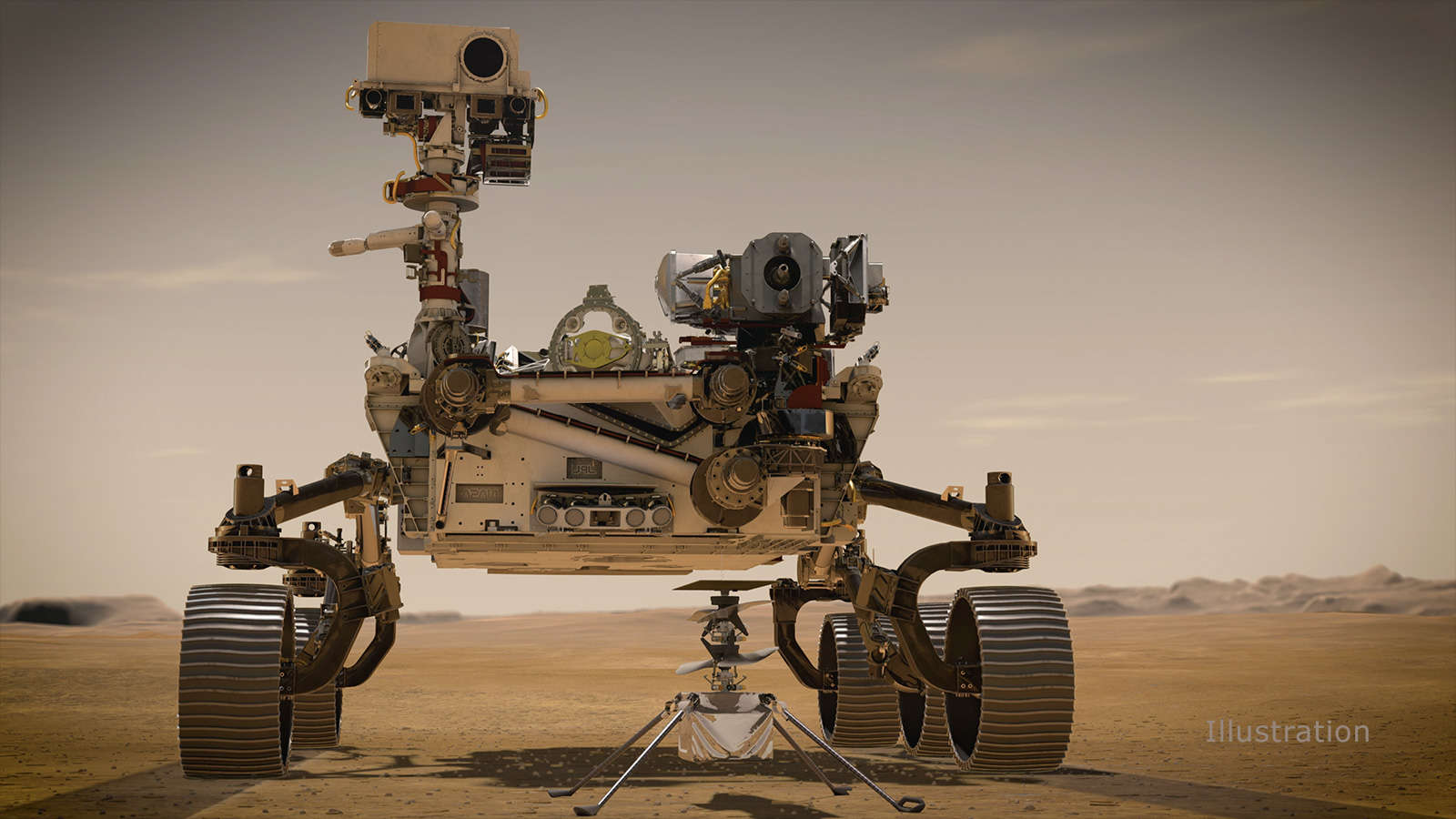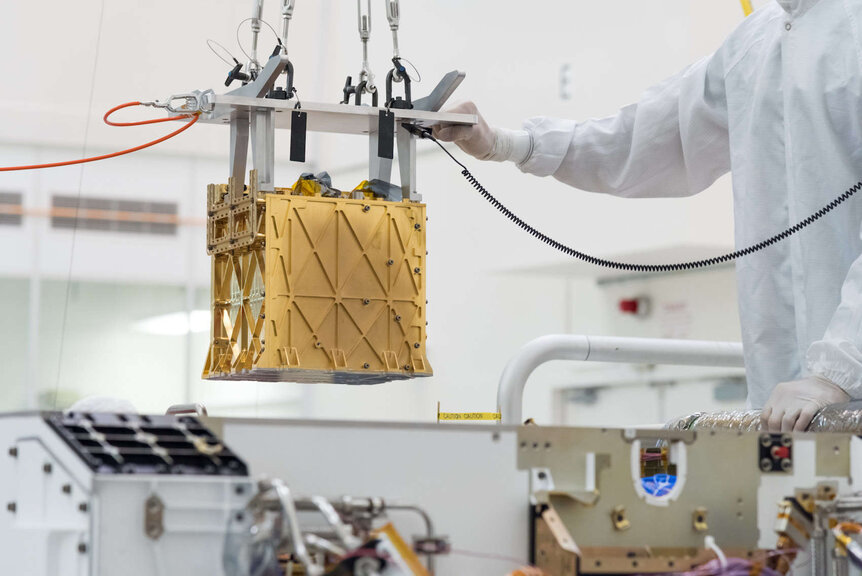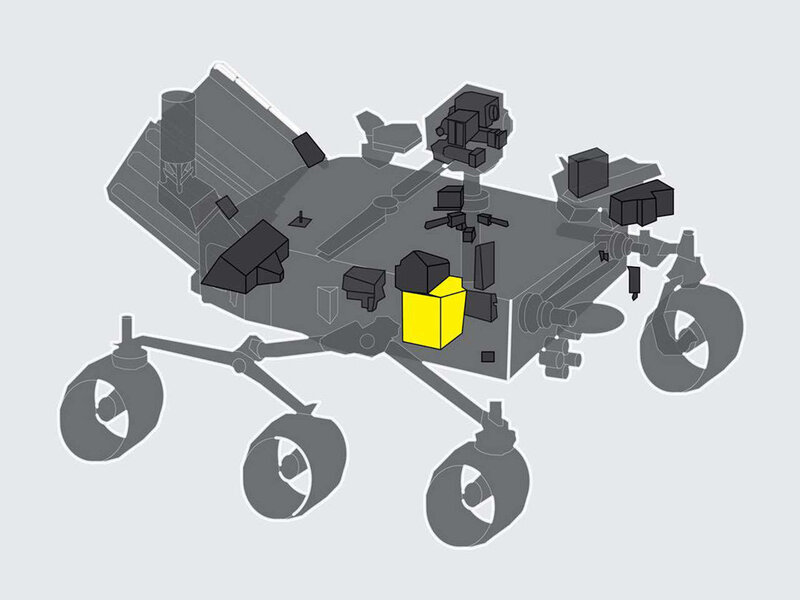Create a free profile to get unlimited access to exclusive videos, sweepstakes, and more!
If you want to live on Mars it’ll take a lot of MOXIE
MOXIE makes oxygen out of Mars’s thin air.

At the moment, breathing on Mars is something of a chore.
For one thing, the atmospheric pressure on the surface is less than 1% of Earth’s at sea level. Standing on Mars and trying to suck in some air would be about as effective as trying to do so from three times the height of Mount Everest.
For another, the Martian atmosphere is almost entirely carbon dioxide, with just a smattering of nitrogen and argon for fun. Trying to find free oxygen to breathe is a losing game.
The odds are little bit better, though, if you happen to be standing near the Perseverance rover. In 2021 a small experiment on the the nuclear-powered roving laboratory created nearly 50 grams of sweet, sweet O2 out of literally thin air. That’s roughly 35 liters of breathable oxygen — if it were on Earth at sea level. Not enough to keep you alive for long, but that’s not really the point.
The point is that we can make air on Mars.
The experiment is called Mars Oxygen In Situ Resource Utilization, or MOXIE for short, and it’s a testbed to see if it’s possible to use native resources to create the needed materials for humans to work and live on Mars. And to come back to Earth.
The basic problem is that delivering materials to Mars is expensive, both in money and effort. It takes a huge amount of fuel to lift, say, a ton of supplies to Earth orbit, let alone Mars, and costs thousands of dollars per kilogram if not more to do so. Human beings have this inconvenient need to eat and breathe, and if they want to return to Earth when they’re done at Mars they need fuel for their rocket as well.
That means sending not just one ton but hundreds of tons of material to Mars. Pricey.
Unless you can make it there. In situ manufacturing could save a vast amount of money in the long run, as well as be safer and more reliable.
Being able to breathe is a good place to start. And while there’s just a trace of breathable oxygen in the Martian atmosphere, there is still quite a bit of oxygen. It’s just locked up in carbon dioxide molecules. All we need to do is get it out.
MOXIE is about 24 x 24 x 31 centimeters in dimension — about the size of a decent toaster oven — and making O2 is what it does. The process is called electrolysis: Using electricity to break apart a molecule into its constituent atoms. MOXIE takes in the air on Mars, runs it through a HEPA filter to get out the fine dust that’s everywhere on the planet, compresses it, heats it to 800°C (1,500°F), then passes it over a nickel cathode, the negatively charged part of the electric device, which decomposes the carbon dioxide into carbon monoxide and atomic oxygen. The oxygen atoms then combine with each other at the anode, the positive end, to make O2. The unneeded carbon monoxide, nitrogen, and argon, and unused CO2 are then blown back out as exhaust.
Over the course of 2021 MOXIE was run seven times for roughly 1 to 1.5 hours, and each time it created 6 – 8 grams of breathable oxygen [link to paper].
That’s not much, but the important part is that it did this at all. It made usable O2.
That’s the whole point. Well, half the point. One goal of MOXIE was to make oxygen, but the other goal was to test the system to see how it can be scaled up. A few grams per hour is nice, but to be useful to future astronauts more like 2 – 3 kilograms per hour is needed. Future super-MOXIEs will need to have hundreds of times more capacity.
According to the MOXIE team, the results they’ve seen so far show that’s entirely possible. MOXIE is small — it had to be to fit on Perseverance with its severe size, mass, and power limitations; it was used because the rover was the first mission available going to Mars for the experiment — so compromises were made to the design. A bigger machine could be more efficient: For example, they found that degradation occurred in MOXIE due to temperature changes between cycles. A continuously running device, or one that can be better insulated as a standalone machine, would likely run better, and have a dedicated power source.
The need for oxygen isn’t just for breathing. Humans working on Mars will need to come back to Earth, and one current idea is to use a rocket called a Mars Ascent Vehicle to lift them off the surface to orbit, where a second rocket will take them home. The MAV would have an oxygen-methane engine, and would likely use about 31 tons of oxygen and 9 tons of methane per launch. Orbital considerations mean a launch every 26 months or so when Mars and Earth align correctly, so that gives a schedule for how rapidly a future version of MOXIE would need to make oxygen.
It’s possible to make oxygen from water ice, which is available on Mars as well, but it’s only in certain locations and would likely need to be mined. That’s costly, difficult, and inconvenient. The beauty of MOXIE is that it uses the air, which is everywhere.
MOXIE is a small step for a machine, but a giant leap for possibilities. And for anyone realistically planning to put human bootprints in the red dust, they can now breathe a small sip of relief.




























